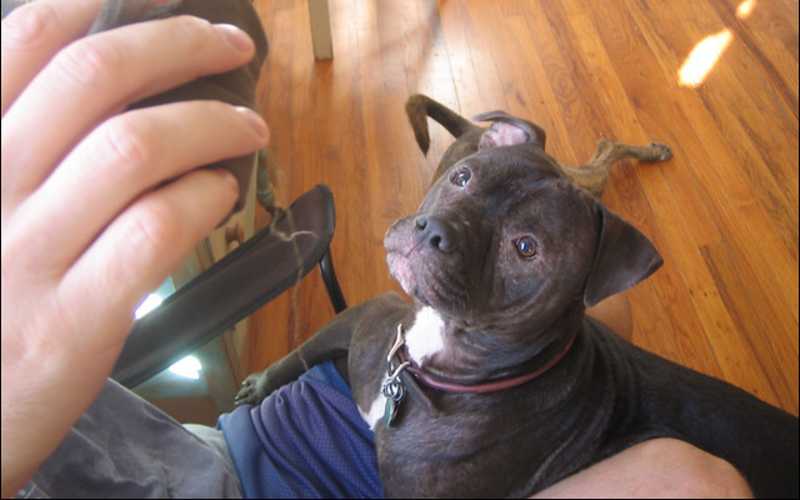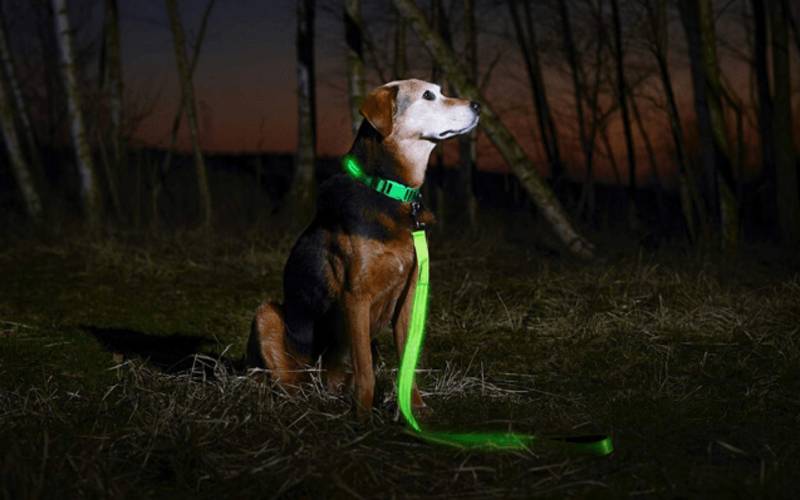Choosing a dog collar is probably one of the most important choices that you will make for your pet. A dog collar needs to be secure and sturdy so that it does not break while he/she is leashed. It also shows that your dog is owned and should contain an identity tag to help you to get your dog back in case he or she ever got lost. Even if your dog wears a harness on walks he or she should still have a collar on with an ID tag. Today’s blog is all about how to choose the right dog collar for your pooch.
Please note that I am a dog owner and bloggers, not a vet or breeder! I am writing this blog from personal experience of dog ownership. With any medical issues or advice regarding your dog, always go to your vet. Please not that some of the dog collar recommendations in this blog we will receive a small commission for recommending them (I am an Amazon affiliate), but this does not affect the price that you pay and it helps me to get this information to you for free!
Why your dog needs a collar
There are many reasons why your dog needs a collar, but the main one is to show that he is owned and identify yourself as the owner. I’ve owner four dogs in total in my lifetime (a dog a decade) and they have all worn collars inside and out! In fact, they become quite attached to their collars and don’t seem to like it if I take it off (for example when they have a bath!) These are the main reasons why your dog should wear a collar:
- It is often a legal requirement
- To show that he is owned
- To hold the identity tag which will get him back to you if lost
- To attach the leash for his walkies
- Collars can be used for medical reasons e.g. flea collars or calming collars
- They are excellent for redirecting your dog’s attention during training

As well as getting a nice collar for your dog with an engraved identity tag it is always a good idea to get your dog microchipped. Most rescue dogs have this simple procedure done before they are adopted (Blake did as he came from the RSPCA).
Will a Collar hurt my Dog?
A collar won’t hurt your dog as long as it fits properly – you should be able to get one or two fingers in-between the collar and your dogs neck which means that it is neither too loose or too tight. The only types of collars that do hurt dogs are choke collars, prong collars and electric collars which which ADVISE AGAINST (more on these later).
Fitting your dog collar
Remember to measure around your dogs neck before ordering, or even better, take your dog to the pet store to be properly fitted – we like to go to Pets at Home for Blake. You can use a tape measure to find the circumference. Many collars will have a breed recommendation that go with them:
- Extra small – 6-11 inches – Chihuahua, Toy Poodle
- Small – 11-13 inches – Jack Russell Terrier, Boston Terrier
- Medium – 13-19 inches – Cocker Spaniel, Springer Spaniel
- Large – 18-23 inches – Boxer, Golden Retriever, Doberman
Also consider the width of the the collar as well. Half an inch is sufficient for small breeds, 0.75 inches is good for medium breeds such as spaniels. If you have a large dog such as a Boxer or Alsatian then go for a collar that is around one inch in width. Some certain breeds will require a specialist type of collar to support their neck type such as a Staffordshire Bull terrier or a greyhound (more on that later).
Remember that to get the collar to fit properly you need to be able to get two fingers comfortable down the side of the collar between the collar and his neck. A well fitting collar should NOT be able to be pulled over his ears and off his head – this could be very dangerous, particularly if it was to come off in a high traffic areas by a busy road.
What type of collar should I choose for my dog?
There are many different types of dog collar available on the market which can be quite confusing. The type of collar that you buy for your dog will often depend on the dog breed that you have and your dogs behaviour.
- Leather buckle collar – This is usually what we use for our terriers. Leather is comfortable and hard wearing and these are the most highly recommended collars for dogs.
- Fabric Collar – Fabric collars are ok for small breeds but just make sure that they are secure and hard wearing. One advantage of fabric collars is that they often have reflective material on them which helps your dog to be seen in the dark.
- Chain collars – I tend to avoid these as they are not as comfortable, but chain collars are OK as long as they are not choke chains (these are cruel and dangerous and often don’t correct pulling behaviour anyway).
- Martingale Dog Collars – These are comfortable fabric or leather collars that allow for training as it tightens slightly when the dog starts to pull, but it is safe and not harmful to the dog. They are used by many breeds including whippets, Jack Russells and Patterdale terriers. These are NOT Choke chain collars (more about those later).
- Staffordshire Bull Terrier Collars – If you have a Staffy, then you will want a thicker and chunkier collar for your dog and many staffy owners like to choose the traditional Staffordshire Bull Terrier collar with knots on.
- Whippet, Greyhound and Lurcher collars – It is important that if you have a greyhound, whippet or lurcher that you get a special kind of collar that will support their longer neck. Something like this:
What collar do I use for my Terrier?
Usually I pick a classic brown leather collar for my terriers. But I have recently moved Blake to using a fabric one. One of the best fabric dog collars we have found is the Kong Dog Collar which is sturdy and has reflective markings. Blake our Patterdale Terrier currently wears one of these in red:
What dog collar should I avoid?
- Choke Collars
- Prong Collars
- Electric Collars
No matter how much your dog pulls or misbehaves on walks, under no circumstances should you go for a choke collar, prong collar or electric collar. These types of collars are designed to hurt or harm your dog as a punishment, but it has been proven not to work as a training method.
They are known to cause prongs pain as well as potential injury and infection from puncture wounds and nerve damage (see this article on the RSPCA website: https://www.rspca.org.uk/adviceandwelfare/pets/dogs/training/prongcollars). Every dog has the right to be trained without fear, pain or anxiety and using these kind of cruel techniques can heighten anxiety and actually make the original behaviour worse.
It’s best to always use positive reinforcement training methods for your dog. They are kind and more likely to have good results.
Getting your Dog ID Tag
The next most important thing is to get your dog an ID tag that identifies you as the owner. You don’t necessarily need your dogs name on the tag – in fact some people advise against it because they believe that it encourages dog napping (your dog may come to them when called). It’s is a good idea to clearly identify:
- The dogs address or at least first line of address plus postcode
- The phone number of the owner
We got our dog’s tag done at Timpson the key cutters and they did a great job (we like them because they are also very supportive of fostering). You can also order engraved dog ID tags online here.
I don’t advise the little barrels with a hand written note inside – once I had a dog with this and the barrel unscrewed and the paper was lost, so I replaced it with a visible ID tag. Also if you have a dog that may be aggressive with strangers it may not let someone unscrew the barrel.

Other Great Temporary Dog Collars that I Recommend
As well as having a sturdy dog collar with an ID tag that your dog wears both indoors and out, I would also recommend the following options as temporary collars to help in certain situations. These can be used in addition to your dogs usual everyday collar and they can go next to or over the top of it.
- Flea Collars – Some dog owners keep fleas away using a flea collar such as the Seresto Flea Collar for dogs. Always read to see how long the protection will last – you will need to de-flea your dog regularly especially in the summer months.
- Calming Dog Collar – Calming dog collars such as this Adaptil collar may work well in distressing situations such as fireworks on bonfire night or new year. Remember though some of these collating dog collars contain a dog appeasing hormone which may only work only if they had a positive bond with their mother.
- LED Dog Collar – An LED dog collar is greta for the dark and cold winter months because your dog can always be seen. This is important for the safety of your dog and others (such as small children who might approach without seeing him or her).

Remember that you can also use your dog collar in conjunction with a harness. A harness is good for a dog that pulls a lot because the pressure is spread across his body rather than
Further Reading
I hope that you found this guide to choosing your dog collar helpful. It’s such an important thing to get right for your dog. If you’re a new dog owner looking for more advice on leads, harnesses and general training then you might find the following further reading helpful:




